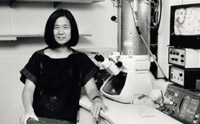非常抱歉,
你要访问的页面不存在,
非常抱歉,
你要访问的页面不存在,
非常抱歉,
你要访问的页面不存在,
验证码:

职称:Professor of Neural Science and Biology; Ph.D. 1985, The Rockefeller University.
所属学校:New York University
所属院系:neural science
所属专业:Neuroscience
联系方式:
The goal of my research is to understand the cell biological mechanisms underlying plasticity and stability of neurons. The mammalian brain undergoes dramatic developmental changes after birth to attain neural functions that reflect the experience of early life. Once mature, the pathways of the brain become more stable while maintaining a certain degree of plasticity. I am investigating how catecholamines and acetylcholine in the neocortex regulate plasticity via interactions with amino acid neurotransmitters during postnatal development and in adulthood. My research while a graduate fellow in the laboratory of Dr. Philip Siekevitz at the Rockefeller University showed that there is a functional link between neuronal activity, second messengers, and phosphorylation of a cytoskeletal protein--MAP2--during the critical period for visual cortex development. These results suggest that neuronal plasticity may depend on the malleability of cell shape, which, in turn, is dependent on the state of phosphorylation of cytoskeletal proteins. For this work, I received a Ph.D. degree in 1985. For my postdoctoral training, I joined the laboratory of Dr. Virginia M. Pickel at the Department of Neurology and Neuroscience, The Cornell University Weill Medical College, where I learned how to visualize two types of molecules simultaneously at a level of resolution afforded by an electron microscope, so that molecular interactions at newly forming and well- established synapses could be probed. Using this technique, I have shown that (1) catecholamines diffuse beyond the synaptic cleft to activate receptors at sites that lack ultrastructural features of synapses; (2) glia extend fine processes around glutamatergic synapses to aid in converting neuronally released glutamate to its non-toxic form, glutamine; (3) the novel neuronal messenger--nitric oxide--can be generated both pre- and postsynaptically and within spines expressing NMDA receptors; and (4) NMDA receptors occur both pre- and postsynaptically; (5) NMDA receptor clusters can be found at nonsynaptic sites of dendritic shafts and somata during early life, prior to the arrival of afferents.